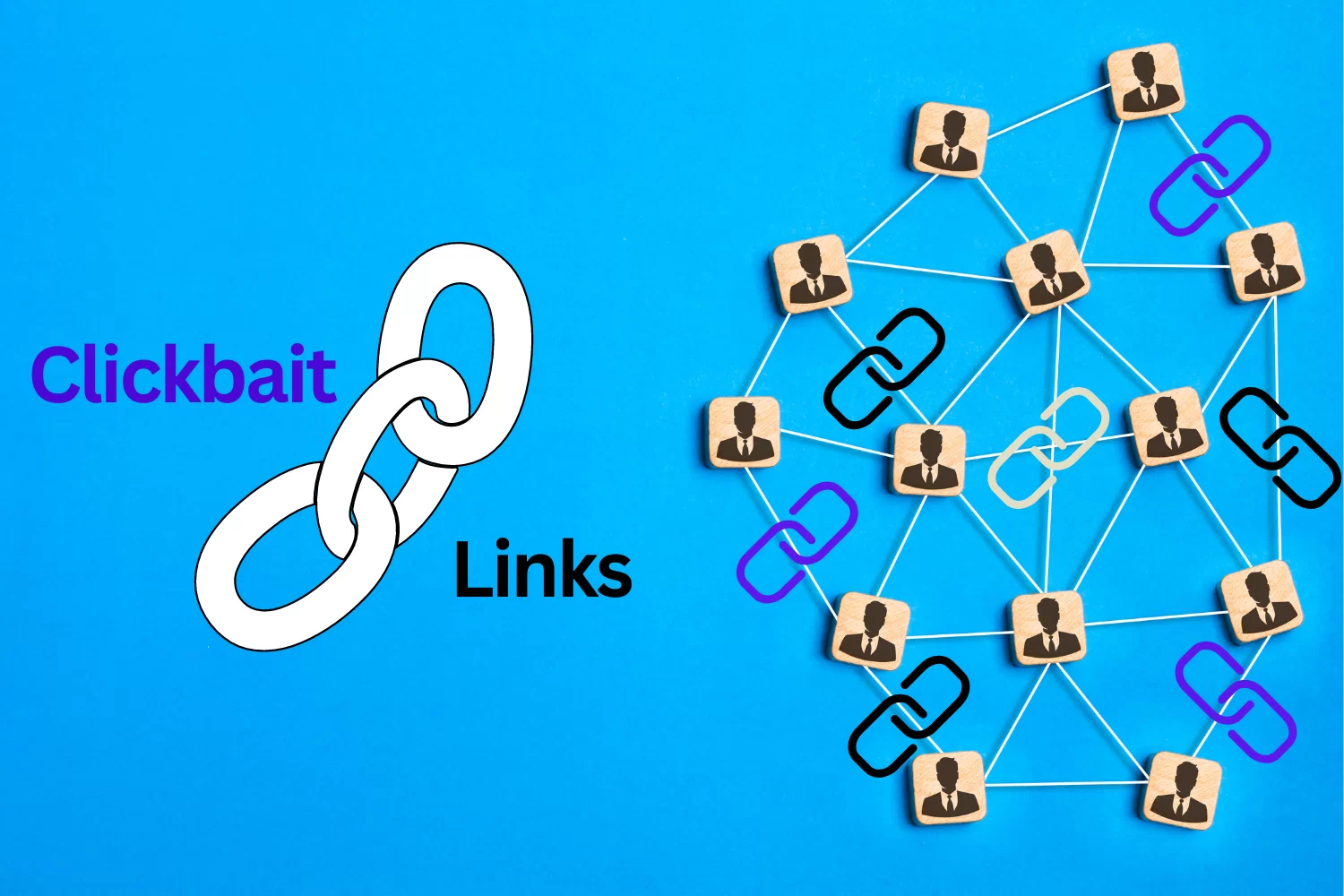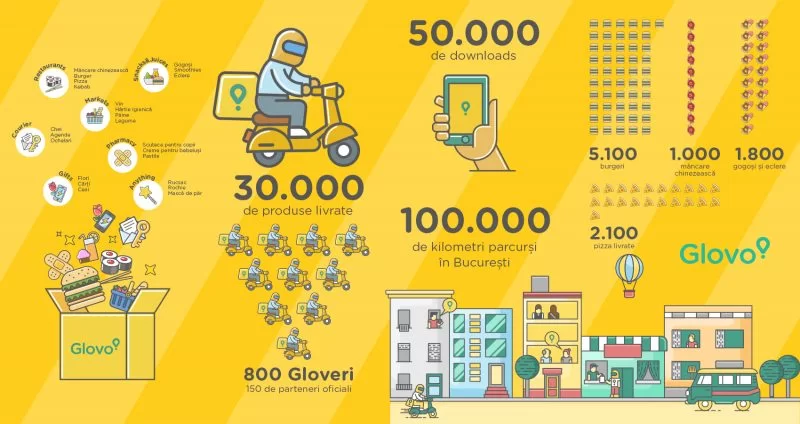As an example, getting someone to open an email is an act of lead conversion. Then again, having them click on the call-to-action link inside that email is another lead conversion. Also, going to the landing page and filling out a registration form to read your blog content is another lead conversion. And, of course, buying your product is the ultimate goal of lead conversion.
For consumer marketers, conversion can be relatively fast and simple. A possible customer scans a QR code to get a coupon (that’s a conversion right there), and then they immediately go to the restaurant to get their free french fries. In that case, with a burger and soft drink (as the key lead conversion) purchase.
For longer and more complex B2B sales, you want a steady series of small conversions. Engage with your lead nurturing email sends, engage on the website, interact with your social media efforts, etc. And hopefully, do a lot of these activities on a mobile device. With that in mind, let’s first understand the role of lead conversion in marketing for marketers in detail below.
What Lead Conversion Is All About
By definition, Lead Conversion is the process of turning an online lead (visitor) into an opportunity, deal, or even customer. Usually, lead conversion is generated from marketing inbound or outbound activities. For example, when someone who is interested in your product or service has taken your desired action on a landing page or has given you some type of info.
Such as email address, phone number, geographic location, consumer interest, user preference, etc. In other words, during campaign marketing, the lead conversion rate is the percentage of leads that became customers. At the end of the day, acronyms and insider terms are fun, but to be successful, you want to reach as many people as possible.
And also, with as much clarity and transparency as possible. If your message is not understood, it is wasted. But, optimization does not start with the Lead Conversion Sequence Heuristic. It starts with determining the best objective — what is the right “macro-yes” to apply your resources to? Once you’ve answered this, the heuristic is a way to answer the next question.
And the question is this: “What is the best way to achieve the objective?” Well, many SEO & SEM masters immediately start with the heuristic elements on the right side of the equal sign and ignore the “C” — the probability of conversion. They proceed with optimization without truly understanding: Who am I trying to convert? What am I trying to convert them to?
Is There A Methodical Way To Increase Lead Conversion?
Realistically, it can be dangerous to immediately begin working on tactics (adding, removing, and changing things) before stepping back and asking yourself first. What is the true objective that you are trying to accomplish? This approach applies skills before strategy. In essence, marketing tends to be dominated by the marketer with the “golden gut.”
Or rather, the star direct response copywriter, thus other disciplines in the enterprise have sprouted. From manufacturing to IT, we’ve developed methodological processes to improve quality and consistency. For instance, the MECLABS Conversion Sequence Heuristic is an attempt to bring the same discipline, rigor, and sustainable success to the marketing department.
It is part of a patented repeatable methodology (patent number 8,155,995) developed by Flint McGlaughlin. The Managing Director, MECLABS (parent company of MarketingExperiments). Above all, based on years of testing and research of real product and service offers presented to real customers. But, the Conversion Sequence Heuristic helps more new marketers.
Related Resource: Landing Page Optimization: 5 factors that lead to (and prevent) conversion
More so, as they discover it for the first time every year. And, it usually helps to occasionally revisit this fundamental approach to marketing every now and again. Sometimes as marketers, we get lost in a sea of acronyms — CRM, SEO, ROI, CTR, etc. — and it only took one word to remind me that not everyone gets all of these references.
To be a truly successful marketer, you want to be as transparent as possible as well as provide clarity. If your message is anywhere in the world of insider esoterica where the audience might be confused, that message is lost. And maybe worse than just ignored, the audience might even feel left out.
The definition in MarketingSherpa handbook defines conversion as, “The point at which a recipient of a marketing message performs a desired action.” In other words, the conversion is simply getting someone to respond to your call-to-action.
The Topmost Lead Conversion Key Terms For Marketers
Anytime I share research about overall conversion rate benchmarks, I give the same caveat. While it’s helpful to understand lead conversion rates for your peers, the bigger question you must ask yourself is this. How do you improve lead conversion rates on your own landing pages and in your own funnels?
While getting a visit to your website or a contact from a prospect is great, those visits and contacts don’t mean much if you don’t use lead conversion best practices to turn them into new customers. So what is lead conversion, anyway?
Well, it’s everything a business needs to do to turn prospects into leads and leads into customers. Check out this glossary of 18 important lead conversion terms every local business needs to know.
1. Lead Source:
This is the source that directed a lead to contact your business and may include any offline or online marketing effort. Such as print advertising, radio/TV advertising, SEO, search advertising, social media, and local directories. It’s important to track the sources of all your leads so you can track the real ROI of each of your marketing efforts.
2. Click Rate:
When it comes to lead conversion, a click refers to when a consumer clicks on a link to your website from an online source, such as an organic search result, online advertising like a text ad or display ad, social media profile or post, local listing, etc.
A click does not necessarily represent a contact or a lead, but it’s the first step in tracking your marketing effectiveness. Knowing how many clicks each marketing source receives is just one indicator of how well it’s performing. It’s also critical to measure how many contacts, leads, and customers you received from online sources.
3. Page Visit:
After the click and a person lands on your website, you’ve received a visit. Similar to clicks, visits are an important place to start with tracking, but they don’t tell you the whole picture of the success of your marketing. Why? Because a visit is not yet a customer.
So, make sure your website is well optimized to get your contacts like calls, emails, web forms, and even live chats to ensure more visitors become contacts.
4. Contacts List:
This is a person who has contacted your business either through a phone call, email, or web form but has not yet been qualified as a lead.
5. Lead Tracking:
This means tracking detailed information about all of your general leads. Such as lead source, name, contact information, call details such as date, time, call recording, and other important data. Either manually or with technology like lead management software.
Uniquely, lead tracking provides critical information that can help you to follow up with your leads effectively and fuels ROI metrics to help you finally know what’s working.
6. Call Tracking:
Call tracking uses a unique phone number assigned to each online and offline marketing and advertising source to track phone calls and the sources that drive them.
For online sources, this phone number is dynamically placed on your website so you can see which source drove phone calls from prospects who visit your site. In the end, call tracking can capture details like the time of the call, the duration, and peak call times and days.
7. Call Recording:
This feature records calls coming into your business and is a function of call tracking. It provides you with the ability to listen to recorded calls.
Eventually, which can help you assess how well your staff interacts with contacts. Particularly, when they call your business and enable you to hear what products and services people are interested in. And also, it helps you to determine if the caller qualifies as a sales lead so you can follow up with them.
8. Lead List:
A lead list compiles all the important information you have collected about your contacts and leads through lead tracking. Like the name, phone number, email address, date and time of contact, lead source, whether they’re an active or a long-term lead, and interests.
Additionally, lead lists help you to stay organized so you can follow up with your leads and share important information with your entire team.
9. Lead Engagement:
When it comes to the lead conversion process, this term encompasses the various actions you take with a prospect or lead. For example,
- calling them back after their first contact with you,
- classifying them like a lead when applicable, and
- sending lead nurturing emails to them.
It also references whether or not your staff follows up and engages with a prospect or lead. Engagement with leads is a critical part of the lead conversion process. Not forgetting, poor lead engagement can result in losing a lead to a competitor who is more engaged and timely in their response.
10. Lead Contact:
You identify a prospect as a lead after they have contacted your business. And you’ve determined that they have shown interest in purchasing a relevant product or service from a business like yours.
Identifying lead contacts is an important step in the lead conversion process. Generally, it helps ensure you are directing your time, efforts, and resources equally well. In particular, towards those who are most likely to become customers.
11. Lead Classification:
This is the process of identifying whether or not a contact is a good lead for your business based on factors like their needs, budget, timeline, and location. You can also classify whether the person is an active lead or a long-term lead based on the buying cycle for your business type. This can help you better prioritize which leads need more immediate, personal follow-up.
12. Active Lead:
A lead who has demonstrated intent to purchase and is in an advanced stage of the sales cycle is an active lead. You want your sales efforts to focus on these leads immediately. Active leads are typically engaging multiple businesses with inquiries such as asking for a quote and checking times and availability.
So, ensure that you and your staff give your active leads the attention they need. Especially, to stay interested in your business by following up personally with them by phone or email. This attention can help your leads move closer to becoming customers.
13. Long-term Lead:
Simply put, this is the consumer who isn’t ready to buy right away. They may be at the beginning of the sales cycle and just starting to research their options. Surprisingly, they might take weeks or even months before making a purchasing decision.
Your industry will often dictate if they’re a long-term lead. For example, consumers looking to remodel a kitchen, rent a new apartment, or buy a new car might want to compare prices, visit different showrooms and rental properties, test drive different model cars, etc.
The best way to determine a consumer’s purchasing timeline is to simply ask them. It’s important that you continue to keep in touch with your long-term leads. Through touch-point phone calls and lead nurturing emails so you stay top of mind with them.
14. Lead Management:
To enumerate, lead management is the process, systems, and guidelines put in place in order to ensure that your business is properly handling new leads. Of course, converting them into customers. It includes processes to keep track of all your leads and stay in front of them throughout the buying cycle.
By the same token, lead management involves everything else. From recording lead information from the moment they first contact you, classifying your contacts as leads, and maintaining a list of top leads and their contact information. As well as, following up with your leads via phone and lead nurturing emails, and tracking whether they converted into a customer.
15. Lead Follow-Up:
This is the process of getting back in touch with a contact or lead after their initial contact. In the lead conversion process, it’s important to leverage both follow-up phone calls and lead nurturing emails. Quickly following up with new contacts and active leads and nurturing long-term leads can help you convert them into customers.
16. Lead Nurturing:
By definition, this process, (which is often automated) involves sending new leads a series of emails that contain various types of content. In general, to keep them interested in your business.
For instance, you can send emails containing special promotions and offers. Like “Buy One, Get One Free” coupons or educational content. Such as explaining the latest trends in your industry and how can they bring value to your prospect. The goal of lead nurturing is to stay top of mind so your leads eventually choose your business instead of someone else.
17. Lead Conversion:
Always remember, that this is when a lead becomes a paying customer. This is the goal of the lead conversion process. True conversion happens once you have successfully generated revenue from your marketing. And, not just when you’ve got someone to call your business, email you, or fill out a web form.
18. ROI Conversion:
The acronym for “Return on Investment,” there are many ways to calculate ROI, depending on what you are measuring. In terms of lead conversion, ROI is the measure of how much value you are driving back to your business. Especially, from each of your marketing sources compared to the amount you invested in each. So, you can see which ones are having the biggest impact on the strategy.
The Bottom Line:
As can be seen, the above-illustrated lead conversion terms are important for every business to understand. Simply, because they help define the processes, systems, metrics, and principles needed to get more customers. Especially, from your lead base and see more value from your marketing.
Before looking into motivation, value, incentive, friction, and anxiety, first define what your ultimate success, or conversion, is. Maybe it’s not even your conversion rate (orders/visits) at all. Or, maybe you are much more successful with a lower conversion rate and a higher revenue number.
In reality, marketers have a blind spot for self-interest. They are wired to miss the mark when it comes to customer communication. The Conversion Sequence Heuristic is a methodology to remove that blind spot. And see marketing collateral through the eyes and understanding of the customer.
Other More Related Sources:
- Online Digital Marketing For Beginners
- Incentive: The Bacon Of Marketing Tactics
- Strategies To Boost Your Business Success
- Search Engine Optimization Webmasters Guide
- Business Marketing & Promotional Guides
Finally, before we conclude, our hope is that the above-revised content on lead conversion key terms will help you actualize your marketing strategy. Be that as it may, do you still want to learn more about lead conversion? Well, feel to Contact Us for free today to help you outreach all your goals even further. Our team of Web Tech Experts Taskforce is always ready!
But, if you’ll have more urgent questions (for FAQ Answers) or even contributions, suggestions, opinions, and recommendations, please feel free to share them in the comments section below this post. By the same token, you can help spread the word by sharing this article with other readers like you. You can also Donate to support our work and motivate us.
NB: Thanks to i New Media for the featured image, and thanks for taking your time to stop by and for reading this guide.
Get Free Updates
Notice: All content on this website including text, graphics, images, and other material is intended for general information only. Thus, this content does not apply to any specific context or condition. It is not a substitute for any licensed professional work. Be that as it may, please feel free to collaborate with us through blog posting or link placement partnership to showcase brand, business, or product.




